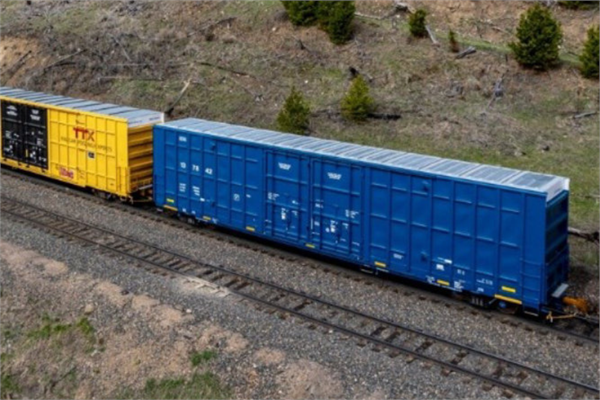
The CarClad WB coatings from Sherwin-Williams are designed to rival the long-term performance of traditional solvent-based epoxies. They offer corrosion protection, durability, excellent adhesion, chemical resistance, extended service life and reduced maintenance needs.
Sherwin-Williams Protective & Marine has unveiled a new line of water-based coatings for rail cars, designed to deliver significant cost savings through long service life and application efficiency.
The newly launched CarClad® WB range includes three products:
- CarClad® WB 2600, a direct-to-metal or two-coat exterior topcoat;
- CarClad® WB 1400, an anti-corrosive primer;
- CarClad® 600, a fast-drying coating suitable for carbon steel jacketed car interiors and tank car exteriors.
“When developing our new line of water-based CarClad WB coatings, we wanted to create a platform that can deliver the lowest total cost of ownership on the market. That meant focusing on longevity of service, so cars can stay on the tracks and out of the coatings shop. It also meant ensuring shop applications can be completed as efficiently as possible, so cars can get back into service quickly. We’ve achieved both goals and more with the new CarClad WB offerings,” has stated Taylor Lewis, Sales Director – Freight Rail, Sherwin-Williams Protective & Marine.
“For example, CarClad WB 2600 applied to a general freight car operating in non-corrosive environments is expected to last 15 to 20 years before a recoat is required. The coating’s flexibility helps with that longevity, as it can withstand impacts and hammering from aggressive loading and unloading without fracturing, which can happen with epoxies. In addition, the acrylic CarClad WB coatings offer excellent colour and gloss retention, allowing owners to keep cars in operation longer without worrying about aesthetics,” has added Taylor Lewis.
The coatings’ higher volume solids also contribute to durability and environmental benefits. At 40% volume solids—higher than the typical 32–35% found in similar products—the coatings maintain edge retention and resist wear on sharp corners and flat surfaces. Higher solids content also reduces volatile organic compound (VOC) emissions during curing, while the formulation itself contains no chemicals or oils known to cause sensitisation, making it safer for applicators.
The CarClad WB coatings are designed for fast and efficient application. They dry quickly, allowing stencilling shortly after application and enabling rapid throughput in coating shops. CarClad WB 2600 can often be applied direct-to-metal in a single pass without a primer, reaching 10–12 mils dry film thickness in one coat. Despite its rapid drying, the coating remains wet long enough to prevent a bumpy dry spray finish during application. It can also be applied in lower temperatures and humid conditions, providing flexibility for different climates.
Where extra corrosion protection is needed, the CarClad WB 1400 primer can be applied, preventing flash rusting during staging of steel components. When using a two-coat system, a wet-on-wet topcoat can be applied around 30 minutes after priming, improving shop efficiency.
“Adding these versatile water-based acrylics to our comprehensive portfolio of rail car coatings and augmenting their performance enhances our ability to provide full service to the market and get them what they need when they need it. Coupling those capabilities with our domestic and international manufacturing capabilities, plus our well-established distribution channel, enables us to be a one-stop shop with a short supply chain for coating hopper cars, tank cars, gondolas, box cars, flat cars, autoracks and a wide variety of intermodal cars and containers,” has concluded Taylor Lewis.